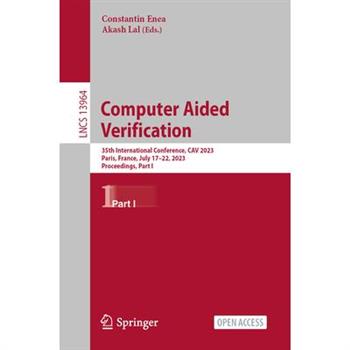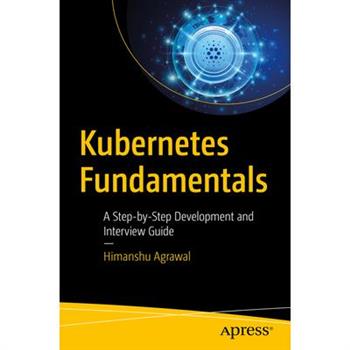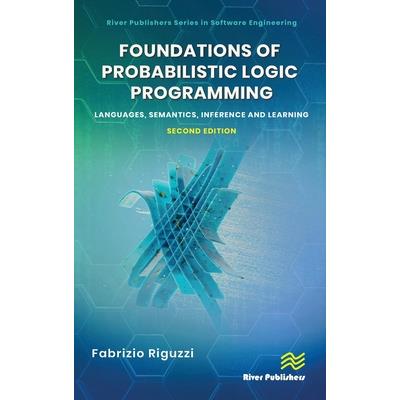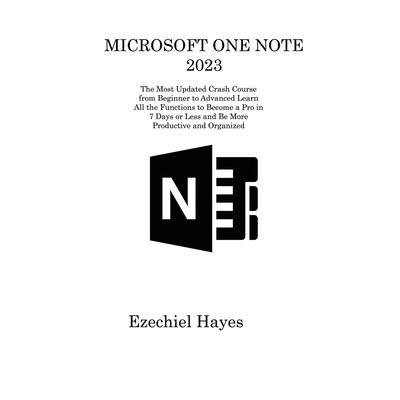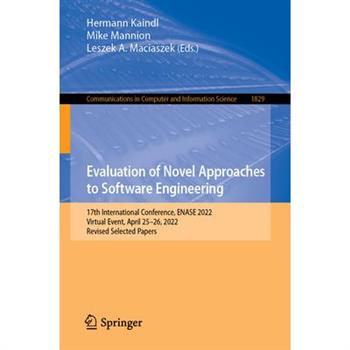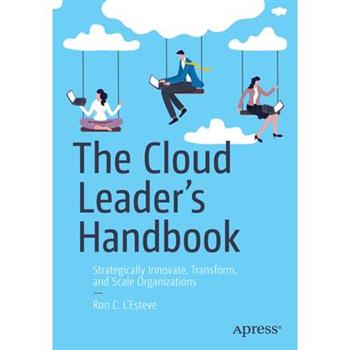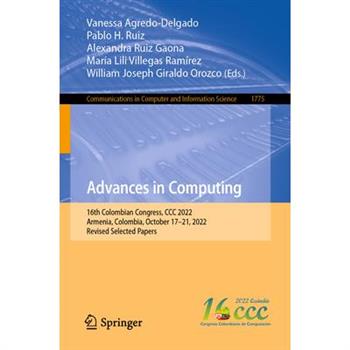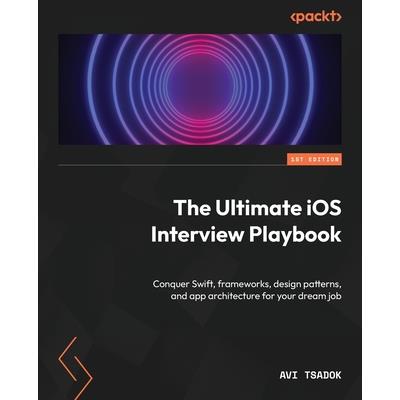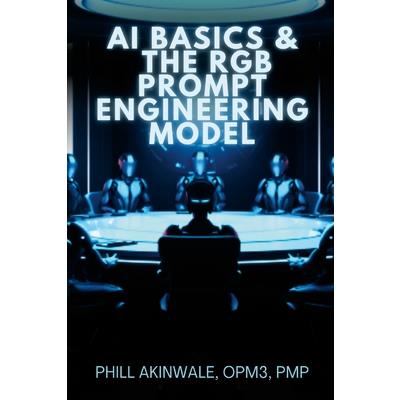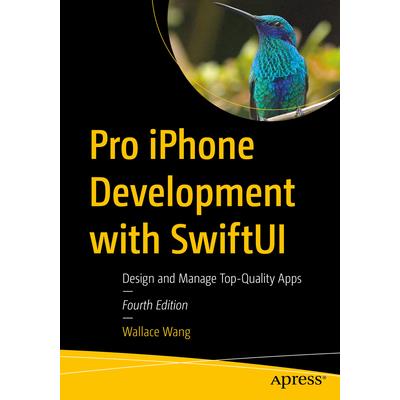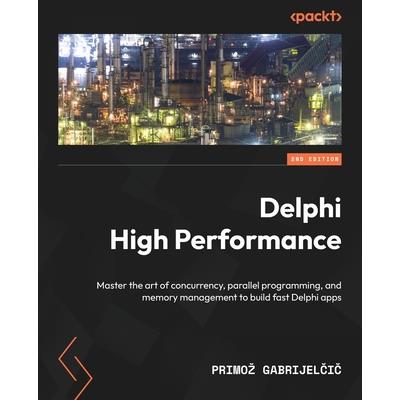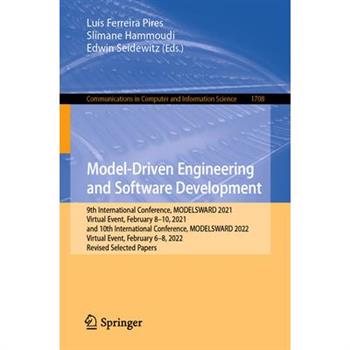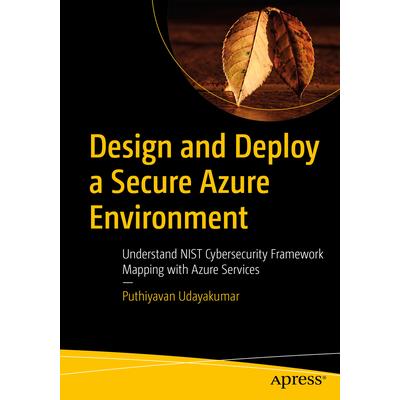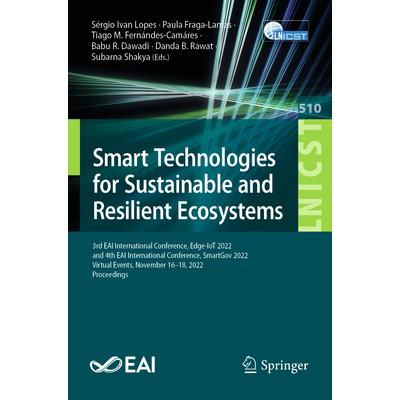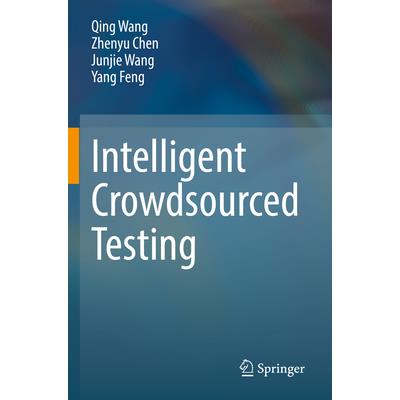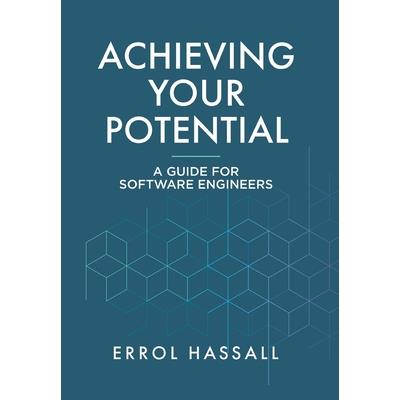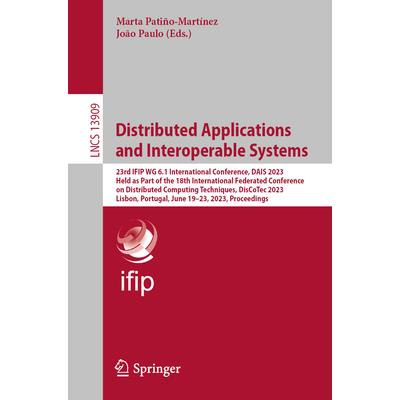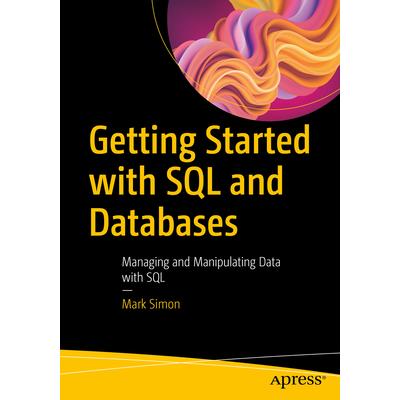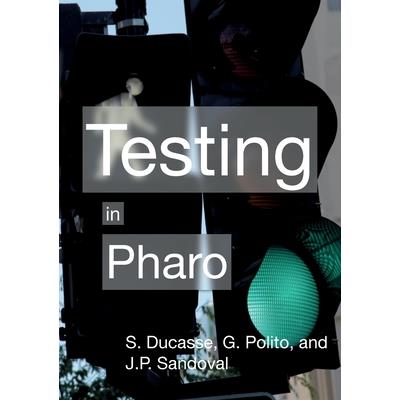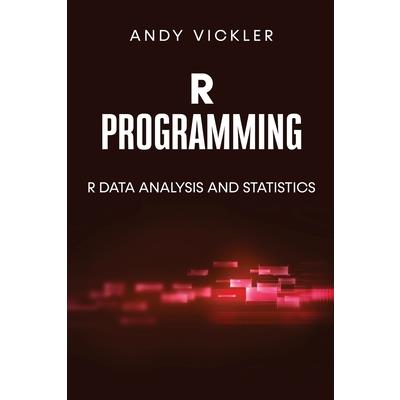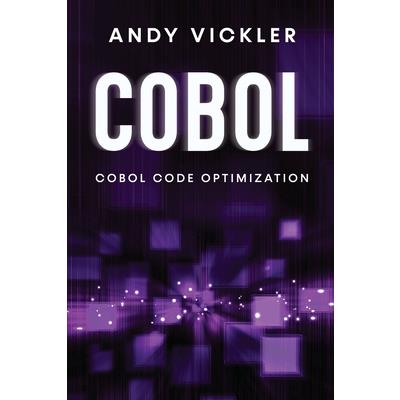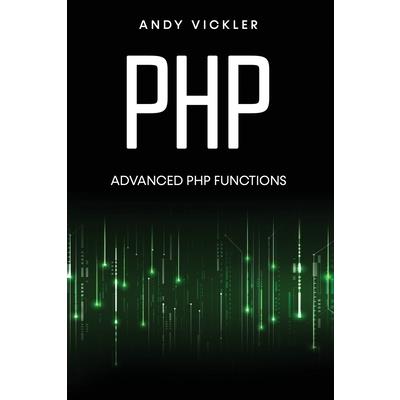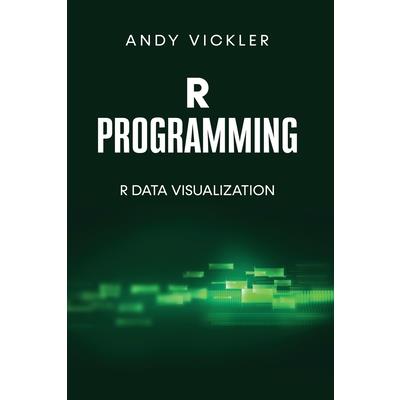Software Architecture. Ecsa 2022 Tracks and Workshops
This book constitutes the refereed proceedings of the tracks and workshops which complemented the 16th European Conference on Software Architecture, ECSA 2022, held in Prague, Czech Republic, in September 2022. The 26 full papers presented together with 4 short papers and 2 tutorial papers in this volume were carefully reviewed and selected from 61 submissions. Papers presented were accepted into the following tracks and workshops: Industry track; Tools and Demonstrations Track; Doctoral Symposium; Tutorials; 8th International Workshop on Automotive System/Software Architectures (WASA); 5th Context-Aware, Autonomous and Smart Architectures International Workshop (CASA); 6th International Workshop on Formal Approaches for Advanced Computing Systems (FAACS); 3rd Workshop on Systems, Architectures, and Solutions for Industry 4.0 (SASI4); 2nd International Workshop on Designing and Measuring Security in Software Architectures (DeMeSSA); 2nd International Workshop on Software Architecture and Machine Learning (SAML); 9th Workshop on Software Architecture Erosion and Architectural Consistency (SAEroCon); 2nd International Workshop on Mining Software Repositories for Software Architecture (MSR4SA); and 1st International Workshop on Digital Twin Architecture (TwinArch).
Transdisciplinary Multispectral Modeling and Cooperation for the Preservation of Cultural Heritage
This volume constitutes selected and revised papers presented during the Third International Conference on Trandisciplinary Multispectral Modelling and Cooperation for the Preservation of Cultural Heritage, TMM_CH 2023, held in Athens, Greece, in March 2023. The 17 full papers and 17 short papers presented in ths volume were thoroughly reviewed and selected from 416 submissions. The papers are organized in topical sections on ​scientific innovations in the diagnosis and preservation of cultural heritage; digital heritage a holistic approach; preservation, reuse and reveal of cultural heritage through sustainable bidding and land management, rural and urban development to recapture the world in crisis through culture.
Ontology-Based Evolution of Domain-Oriented Languages
This book focuses on the study of ontology-based models and methods used for the implementation of the evolution of external domain-specific languages (DSL), which are mainly intended for modelling the structure of human-machine interfaces. The primary goal of the approach is to increase the efficiency of support processes during the life cycle of general-purpose software systems. The book is structured in seven chapters. Chapter 1 presents the objectives and significance of the research, as well as a summary of the contents of the work. Chapter 2 analyses the existing classical DSL design and implementation methodology for modelling human-machine interfaces in the context of the lifecycle of general-purpose software systems. Next, chapter 3 is devoted to an analysis of existing methods and formalisms used in describing the structure of a DSL for modelling human-machine interfaces of software systems. Subsequently, chapter 4 provides a detailed description of the proposed new projection-based approach for developing such DSLs. Chapter 5 then describes the software implementation of the human-machine interface evolution based on an example of an external DSL in two domains. Eventually, chapter 6 analyses the application of the proposed projection approach for more complex systems, namely, decision support systems based on heterogeneous information of decision makers. The concluding chapter 7 summarizes the main results of the research and suggests further development paths and practical applications. The book is written for researchers in model-driven software development in general and in domain-specific language engineering in particular.
Computer Algebra in Scientific Computing
This book constitutes the refereed proceedings of the 25th International Workshop on Computer Algebra in Scientific Computing, CASC 2023, which took place in Havana, Cuba, during August 28-September 1, 2023.The 22 full papers included in this book were carefully reviewed and selected from 29 submissions. They focus on the theory of symbolic computation and its implementation in computer algebra systems as well as all other areas of scientific computing with regard to their benefit from or use of computer algebra methods and software.
Computer Aided Verification
The open access proceedings set LNCS 13964, 13965, 13966 constitutes the refereed proceedings of the 35th International Conference on Computer Aided Verification, CAV 2023, which was held in Paris, France, in July 2023. The 67 full papers presented in these proceedings were carefully reviewed and selected from 261 submissions. The have been organized in topical sections as follows: Part I: Automata and logic; concurrency; cyber-physical and hybrid systems; synthesis; Part II: Decision procedures; model checking; neural networks and machine learning; Part II: Probabilistic systems; security and quantum systems; software verification.
Computer Aided Verification
The open access proceedings set LNCS 13964, 13965, 13966 constitutes the refereed proceedings of the 35th International Conference on Computer Aided Verification, CAV 2023, which was held in Paris, France, in July 2023. The 67 full papers presented in these proceedings were carefully reviewed and selected from 261 submissions. The have been organized in topical sections as follows: Part I: Automata and logic; concurrency; cyber-physical and hybrid systems; synthesis; Part II: Decision procedures; model checking; neural networks and machine learning; Part II: Probabilistic systems; security and quantum systems; software verification.
Fundamentals of Software Engineering
This book constitutes the thoroughly refereed post-conference proceedings of the 10th International Conference on Fundamentals of Software Engineering, FSEN 2023, held Tehran, Iran in May 4-5, 2023.The 9 full papers and 2 short papers presented in this volume were carefully reviewed and selected from 19 submissions. The topics of interest in FSEN span over all aspects of formal methods, especially those related to advancing the application of formal methods in the software industry and promoting their integration with practical engineering techniques. The papers are organized in topical sections on coordination, logic, networks, parallel computation, and testing.
Kubernetes Fundamentals
Explore the world of Kubernetes and learn the concepts needed to develop, deploy, and manage applications on this container orchestrator. This step-by-step development guide is designed for application developers and support members aiming to learn Kubernetes and/or prepare for interviews. All the concepts in the book are presented in Q&A format, with questions framed exactly the way they are asked in an interview, giving you a distinctive edge in interviews.You'll start by understanding how application development and deployment have evolved over the decades leading up to containerization. You'll then dive deep into core Kubernetes concepts, learning Kubernetes architecture, Kubernetes objects and workload resources, and how to exploit them to their full potential. You'll also learn Kubernetes deployment strategies and concepts related to rollout and rollback.Moving on, you'll look at two very important aspects of any computing ecosystem: networking and storage. You will gain an understanding of access control in Kubernetes and how to manage a Kubernetes cluster using probes, resource quotas, taints, and tolerations. You will also get an overview of Docker and review Docker and Kubernetes best practices. Finally, you will learn about the kubectl command line tool.What You Will LearnLearn about basic and advanced Kubernetes objects and workload resourcesMaster important concepts such as namespaces, selectors, annotations, and access controlUnderstand the Kubernetes networking and storage systemManage a Kubernetes cluster with the help of probes, resource quotas, limits, and taintsWho This Book Is For Application developers and technical managers--both on the development and support sides, beginner and intermediate Kubernetes practitioners and aspirants, and those preparing for Kubernetes interviews.
Foundations of Probabilistic Logic Programming
This book aims at providing an overview of probabilistic logic programming with a special emphasis on languages under the distribution semantics, and presents the main ideas for semantics, inference, and learning and highlights connections between the methods.
Microsoft One Note 2023
Master the world of Microsoft Office and discover how you can become a OneNote expert in less than 7 days!Many individuals value being organized, particularly when it comes to their jobs or their finances.Owning a computer may appear to be all you need to keep your affairs in order, but this is not always the case.You are not an organized person simply because you own a computer!This book will cover topics like creating and sharing notebooks, attaching your Microsoft account to OneNote, utilizing the Ribbon toolbar, formatting, printing, and exporting your notebooks, and more!To make the content easy to follow, this book has a step-by-step approach while also giving screenshots.Here's just a little of what you'll discover inside: - The Top Things To Do Before Getting Started With Microsoft OneNote In 2023- A Breakdown of The OneNote Interface - and How To Navigate It Like a Pro- Any device can access local and online OneNote notebooks- Create handwritten notes with drawings, screen captures, audio files, video clips, and structured equations- Your notes can be revised, reorganized, flagged, formatted, searched, and shared- Customize OneNote to fit your working style (Add-ins and others)- Email, Microsoft OneDrive, and SharePoint can all be used to share notes- Tips To Save You Time and Energy- And So Much More!If you've always wanted to master OneNote but you never knew where to begin, then Microsoft OneNote 2023 reveals how you can easily wrap your head around this powerful tool and begin using it like a pro in 2023.Whether you're a complete beginner, or an intermediate user looking for some new time-saving tips and takeaways, this brilliant handbook will help readers of all backgrounds to master Microsoft OneNote in a fast, easy, and enjoyable way.
Algorithms
Algorithms are ubiquitous in the contemporary technological world, and they ultimately consist of finite sequences of instructions used to accomplish tasks with necessary input values. This book analyses the top performing algorithms in areas as diverse as Big Data, Artificial Intelligence, Optimization Techniques and Cloud & Cyber Security Systems in order to explore their power and limitations.
Evaluation of Novel Approaches to Software Engineering
This book constitutes the refereed proceedings of the 17th International Conference on Evaluation of Novel Approaches to Software Engineering, ENASE 2022, held Virtually.The 15 full papers included in this book were carefully reviewed and selected from 109 submissions. They were organized in topical sections as follows: Theory and Practice of Systems and Applications Development; Challenges and Novel Approaches to Systems and Software Engineering (SSE); and Systems and Software Quality.
The Cloud Leader’s Handbook
This book is a comprehensive guide covering modern cloud strategies and leadership approaches for building and scaling organizations to maturity on their cloud adoption journey. The book starts by examining technical topics from the perspective of the cloud leader, who is responsible for cloud teams and accountable for cloud products and platforms within their organization. Through a series of practical insights and real-world examples, you will gain a deep understanding of the key considerations for leading a cloud-driven organization. These considerations include understanding the benefits of digital transformation, managing global tech teams, and delivering excellence through platform ownership. Towards the end of the book, you will explore the latest trends and best practices for strategically innovating and scaling your organization in the cloud. With the knowledge gained from this book, you will be able to harness the power of the cloud to drive business success and gain valuable insights and practical strategies to support and empower the adoption of modern cloud platforms and technologies for your clients and organization. The Cloud Leader's Handbook is a must-read for any Cloud Leader who wants to stay ahead of the curve and achieve success in the rapidly evolving world of cloud computing. What Will You LearnDevelop a strong foundation in the technical aspects of cloud leadershipUnderstand the benefits of digital transformation and how to lead a cloud-driven organization, including managing global tech teams.Discover the bleeding-edge cloud trends that are influencing organizational roadmapsTransition into the role of the modern Cloud Leader by gaining a deeper perspective around what it means to own, manage, administer, govern, and optimize the modern cloud platformLearn how to effectively envision, manage, and deploy modern cloud transformation projects through successful approaches around innovation, strategy, and excellence Who This Book Is ForExperienced IT professionals and business leaders looking to understand the power of the cloud.
Advances in Computing
This book constitutes the refereed proceedings of the 16th Colombian Congress on Computing, CCC 2022, held in Armenia, Colombia, during October 17-21, 2022The 12 full papers included in this book were carefully reviewed and selected from 40 submissions. They topics of this volume include software engineering and IT architecture, human-computer interaction, cybersecurity and information security, image processing and computer vision, multimedia, artificial intelligence and robotics, education and ICT, data, information and knowledge, distributed systems and large-scale computing, and formal methods in computer systems, among others.
The Ultimate iOS Interview Playbook
Take your interview skills to the next level by reviewing hundreds of real-world interview questions and coding examplesPurchase of the print or Kindle book includes a free PDF eBookKey Features: Solve complex design and architecture tasksDevelop mature and complete answers to commonly asked questionsEnhance your interview prospects by building a strong developer brand through publications and online projectsBook Description: As an iOS developer, you must possess a diverse skill set encompassing Swift coding, design knowledge, and mastery of development tools. And while the demand for iOS developers remains high, the competition for landing your dream job has intensified in recent years. Being a skilled iOS developer is no longer enough - acing interviews is now just as essential as having technical expertise.In The Ultimate iOS Interview Playbook, you'll discover innovative ways to stand out as an iOS developer and pass every job interview. It will guide you to build your developer brand and present your skills to potential employers. This comprehensive guide covers over 100 interview questions, from Swift fundamentals and frameworks to complex design patterns and app architecture. You'll learn how to approach coding assessments like a pro and avoid red flags that could hinder your chances of success.Drawing from the author's experience of interviewing hundreds of iOS developers and having been a candidate themself, this book addresses the challenges of showcasing your skills and knowledge within a limited timeframe.By the end of this book, you'll be ready to excel in any iOS interview, demonstrating your strengths and confidently tackling even the most challenging questions, ultimately paving the way to secure the job you've always wanted.What You Will Learn: Gain insights into how an interview process worksEstablish and capitalize on your iOS developer brandEasily solve general Swift language questionsSolve questions on data structures and code managementPrepare for questions involving primary frameworks such as UIKit, SwiftUI, and Combine Core DataIdentify the "red flags" in an interview and learn strategies to steer clear of themWho this book is for: Designed for iOS developers of all levels, from juniors to seniors, this book is a valuable resource for anyone who wants to enhance their interview skills in iOS development. Basic knowledge of iOS development and Swift is necessary to get started with this book.
Mobile App Development for Businesses
Digitize your business operations both internally and externally with a well-structured app design. Customers today turn to mobile when searching for their future vendor. This book is your step-by-step guide through the process of building mobile apps that will meet your company's needs as well as the needs of your staff. See exactly how applying certain basic principles work and make them serve your goals by troubleshooting common mobile app design, usability, and promotion issues. You'll start by listing the advantages of what makes a mobile app an ideal platform and resource for growing your market and revenue. As many companies burn money on failed mobile app projects, you'll review the best practices on how to outline your app ideas and create a mobile product roadmap. You'll then explore the process of starting mobile app development--from an initial idea to the final product. You'll look at the setbacks in development that can cost you a successful outcome, andreview proven practices and features that lead to success no matter what industry you operate in. You'll also understand the dynamics of mobile app development, and the best ways to ensure that your mobile app serves your company's goal for further growth. At the end, you'll future proof your app and weigh the pros and cons of potentially outsourcing mobile development. Mobile App Development for Businesses puts theory into practical use for developing internal and external mobile apps. What You'll LearnLaunch and position your app in the marketDevelop apps for internal and external audiencesCollect and incorporate user feedbackSee why any great business today starts with a solid digital foundationWho This Book Is ForEntrepreneurs, business owners, directors, and executives wishing to grow their businesses and expand their reach in the market. Previous technological experience is helpful but not required.
Introducing Functional Programming Using C#
Understand the power of C#, a multi-paradigm language. This book will help you learn, analyze, and harness the functional aspects of C# so you can create a better program.The book is divided into two parts. Part I starts with an overview of functional programming (FP). It covers the building blocks for FP: functions and immutability. You will learn about the built-in supports for FP, first- and higher-order functions (HOF), functional purity and side effects, different forms of immutability, and much more. Part II includes discussions on functional composition using pipelining and currying. It also explains how to handle temporal coupling and discusses partial functions and useful functional patterns (such as Map, Bind, Filter, and Fold). Author Vaskaran Sarcar takes you through functional exception-handling mechanisms and provides additional tips to make your programs more efficient.After reading the book, you will understand and be able to implement key aspects of FP. You will be able to produce better code (and refactor existing code) by combining the best techniques from both FP and object-oriented programming (OOP) paradigms.What Will You LearnUnderstand how the concepts of functional programming (FP) can be implemented using C#Refactor existing code (following the FP paradigm) to make it more readable, maintainable, and predictiveKnow how advanced features (such as delegates, lambdas, generics) can be used differentlyUnderstand how to efficiently use features such as lambda expressions and type inference as C# includes explicit language extensions to support functional programmingWho This Book Is ForC# developers familiar with object-oriented programming (OOP) who want to harness the power of functional programming (FP)
Python Data Science for Beginners
Embark on a transformative journey into the world of data science with Python, the most popular programming language for data analysis and manipulation. "Python Data Science for Beginners" is a comprehensive guide that equips you with the fundamental skills and knowledge needed to dive into the exciting field of data science, even if you have no prior coding experience.Inside, you'll find: - A step-by-step introduction to Python programming, covering the basics and providing a solid foundation for data science - Practical explanations of key data science concepts, including data exploration, visualization, manipulation, and analysis - Hands-on coding examples and exercises to reinforce your understanding and help you build your own data science projects - Guidance on popular Python libraries for data science, such as Pandas, NumPy, Matplotlib, and Scikit-learn - Strategies for effective data cleaning, preprocessing, and feature engineering And Much More!...Whether you're a student, professional, or simply someone with a curiosity for data science, "Python Data Science for Beginners" provides a comprehensive and beginner-friendly approach to mastering the essentials. With the help of this book, you'll gain the confidence to tackle real-world data challenges and embark on a rewarding career in the field of data science.Get ready to unleash your analytical skills and unlock the power of Python in the fascinating world of data science.
AI Basics and The RGB Prompt Engineering Model
Unlock the mysteries of Artificial Intelligence and master the foundations of the RGB Prompt Engineering Model with "AI Basics: A Practical Understanding of RGB Prompt Engineering"! This comprehensive guide is designed for AI enthusiasts, tech hobbyists, and professionals alike who want to delve deeper into the world of AI and understand the groundbreaking RGB Prompt Engineering Model. Each chapter carefully presents a structured pathway from AI's historical origins to the most advanced applications in today's technology landscape. The book navigates you through key AI concepts like Machine Learning, Natural Language Processing, and Computer Vision, setting a robust base for exploring the unique capabilities of the RGB Model. What sets this guide apart is its specific focus on the RGB Prompt Engineering Model, a state-of-the-art tool in AI that elevates machine understanding to new heights. With detailed explanations, real-world examples, and hands-on exercises, you will learn to effectively harness the power of this groundbreaking model. "AI Basics: A Practical Understanding of RGB Prompt Engineering" offers you the future of AI today. Let it be your companion in this fascinating journey towards understanding and applying AI in our daily lives. Prepare to step into the future, one prompt at a time!
Theoretical Aspects of Software Engineering
This book constitutes the proceedings of the 17th International Conference on Theoretical Aspects of Software Engineering, TASE 2023, held in Bristol, UK, July 4-6, 2023.The 19 full papers and 2 short papers included in this book were carefully reviewed and selected from 49 submissions. They cover the following areas: distributed and concurrent systems; cyber-physical systems; embedded and real-time systems; object-oriented systems; quantum computing; formal verification and program semantics; static analysis; formal methods; verification and testing for AI systems; and AI for formal methods.
Managing Information Technology
There are two different, interdependent components of IT that are important to a CIO: strategy, which is long-term; and tactical and operational concerns, which are short-term. Based on this distinction and its repercussions, this book clearly separates strategy from day-to-day operations and projects from operations - the two most important functions of a CIO.It starts by discussing the ideal organization of an IT department and the rationale behind it, and then goes on to debate the most pressing need - managing operations. It also explains some best industry standards and their practical implementation, and discusses project management, again highlighting the differences between the methodologies used in projects and those used in operations. A special chapter is devoted to the cutover of projects into operations, a critical aspect seldom discussed in detail. Other chapters touch on the management of IT portfolios, project governance, as well as agile project methodology, how it differs from the waterfall methodology, and when it is convenient to apply each. In this second edition, besides a number of corrections and updates throughout the text, chapter 8 on "Agile Project Management" replaces the former chapter 8 completely, and chapter 10 on "IT Security" has been newly introduced as this topic has become more and more important for both management and operations during the last six years.Taking the fundamental principles of IT service management and best practices in project management, the book offers a single, seamless reference for IT managers and professionals. It is highly practical, explaining how to apply these principles based on the author's extensive experience in industry.
Pro iPhone Development with Swiftui
Develop your own bestselling iPhone and iPad appsUse Swift playgroundsOptimize your code and deliver great user experiences
Beginning iPhone Development with Swiftui
Develop your own iPhone and iPad apps with the latest version of SwiftUse Swift playgrounds Optimize your code and deliver great user experiences
Super App Part 1 - The Fundamentals
Mobile Development is an unavoidable digital strategy for most enterprises. It needs vision, focus, and experience to develop software with longevity, sustainability, maintenance and change management at a reasonable cost for the organisation and if there is infinite time anyone can learn and write software.This book is for those readers who aspire to know about mobile application developments for building a Super App where the end goal is to create a mental model. The book is a part of the Super App series. Reading it will rewire the reader's thought process with ideas that act as recipes and perspectives that will help the individual to lay the foundation and do the groundwork for the Super App mobile application. In addition, the book covers the essentials required to be understood by readers who are in the driver's seat for a mobile application project.Reading this book prepares an individual to think in a direction which is close to the ground realities for the approaches required for building a Super App. Furthermore, the book brings together the experience gained from multiple projects over the past ten years, which the reader can capitalize on and add to their knowledge base.The book presents the reader with the fundamentals for the development and design philosophies of the Super App. It starts with exploring what a Super App is, and the narrative follows where the essential technology and practical wisdom for the approaches can be applied while building a Super App. The book applies two use cases to drive the narrative. The first is a hypothetical mobile application from an organisation providing multiple services like cab booking, online book purchase, cycle renting and seven other services. The second is a finance application that supports multiple regions.To benefit fully from this book, it is recommended that the reader should meet the following prerequisites: 1.Hands-on experience in developing a mobile application on at least one platform.2.Knowledge of architectural patterns used in mobile development.3.Experience in creating libraries and reusable packages for mobile applications.4.Understand the terminology used in the development of a mobile application life-cycle.Sreejith K Rajendran, a passionate technology leader in iOS mobile development, has more than a decade of development expertise along with an exposure of working with multiple organisations and industry veterans. Mobile application development has been a focus area for Sreejith as a Software Engineer. His experience gives him the advantage of sharing his point of view on things that have worked out and those that have failed. He has encountered all these while building scalable mobile applications for thriving business enterprises.His expertise on engineering practices and thought leadership inherent from the organisation, along with the collated experiences from multiple projects and organisations has been pivotal in shaping his tech acumen in this diverse tech landscape.Sreejith's areas of expertise are: - Native iOS Application Development (Swift & Objective C)- Developing enterprise applications MBass integration- Developing applications in cross-platform Frameworks like Xamarin, Flutter, and PhoneGap- Developing mobile applications in banking, insurance, trading, and retail domains- Developing IOT-based applications using BLE, Onvif Protocol-supported IP cameras, and indoor navigation using iBeaconsThe exposure and technical acumen cultivated over the past decade have motivated and pushed Sreejith to embrace the path of an Author with the intent of helping the broader community by sharing his knowledge.
Delphi High Performance - Second Edition
Discover algorithm performance, high- and low-level optimizations, and the internal behavior of programs written in the Delphi languagePurchase of the print or Kindle book includes a free PDF eBookKey Features: Discover external programming libraries that will speed up your programming and codeLearn to integrate external libraries into Delphi programsBuild fast Delphi applications using concurrency, parallel programming, and memory managementBook Description: Performance matters! Users hate to use programs that are not responsive to interactions or run too slow to be useful. While becoming a programmer is simple enough, you require dedication and hard work to achieve an advanced level of programming proficiency where you know how to write fast code.This book begins by helping you explore algorithms and algorithmic complexity and continues by describing tools that can help you find slow parts of your code. Subsequent chapters will provide you with practical ideas about optimizing code by doing less work or doing it in a smarter way. The book also teaches you how to use optimized data structures from the Spring4D library, along with exploring data structures that are not part of the standard Delphi runtime library.The second part of the book talks about parallel programming. You'll learn about the problems that only occur in multithreaded code and explore various approaches to fixing them effectively. The concluding chapters provide instructions on writing parallel code in different ways - by using basic threading support or focusing on advanced concepts such as tasks and parallel patterns.By the end of this book, you'll have learned to look at your programs from a totally different perspective and will be equipped to effortlessly make your code faster than it is now.What You Will Learn: Get to grips with algorithmic complexity and learn how to recognize itUse tools to determine program runtime behaviorSpeed up programs by doing less instead of moreDiscover the internal workings of Delphi data structuresGain an understanding of Delphi's memory managerFind out how to write low-level parallel programs with TThreadUse parallel patterns from the PPL and OTL libraries to write fast codeInclude external code, written in C or C++, in Delphi programsWho this book is for: This book is for all Delphi programmers. Whether you're a beginner or an accomplished programmer, you will find something interesting. Even though the focus is on the latest Delphi release, the code uses only standard Delphi syntax without syntactic additions from the latest releases, and most of it should compile and run in any Delphi from XE7 onward. If you're using an older version of Delphi, don't despair! Most of the concepts in this book do not depend on a specific Delphi version and will be useful for everyone.
Trends in Functional Programming
This book constitutes revised selected papers from the 24th International Symposium on Trends in Functional Programming, TFP 2023, held in Boston, MA, USA, during January 12-15, 2023. The 6 full papers presented in this volume were carefully reviewed and selected from 14 submissions. They span a wide variety of topics including DSL design and implementation, dependent type systems, instruction set architecture, data structures, and logic programming.
Model-Driven Engineering and Software Development
This book constitutes the refereed post-proceedings of the 9th International Conference and 10th International Conference on Model-Driven Engineering and Software Development, MODELSWARD 2021 and MODELSWARD 2022, was held virtually due to the COVID-19 crisis on February 8-10, 2021 and February 6-8, 2022.The 11 full papers included in this book were carefully reviewed and selected from 121 submissions. The purpose of the International Conference on model-driven engineering and software development is to provide a platform for researchers, engineers, academics as well as industrial professionals from all over the world to present their research results and development activities in using models and model driven engineering techniques for system development.
Design and Deploy a Secure Azure Environment
Follow this comprehensive guide as it provides you with a deep understanding of Azure security principles, best practices, and implementation strategies aligned with the NIST Cybersecurity Framework (CSF). The book covers various topics from Azure security to designing and deploying solutions for infrastructure, data, and applications, including identify, protect, detect, respond, and recover solutions, in line with the NIST CSF.The book will take you through an introduction and the basic requirements for cloud security aligned with the NIST CSF. And then it will teach you how to design and deploy security for infrastructure, data, and apps security in an Azure enterprise environment. The book covers the NIST CSF and various cloud services offered by Microsoft Azure, maps each service against the NIST CSF, and explains each section with design and deployment considerations from a cybersecurity viewpoint.After reading this book, you will understand NIST CSF alignment with Microsoft Azure Services. You will also have a comprehensive understanding of Azure security and be equipped with the knowledge and skills to design, deploy, and manage secure Azure environments. Whether you are a security professional, system administrator, or cloud architect, this book is a valuable resource for mastering Azure security and implementing robust security measures in the Azure environment using the NIST CSF. What You Will LearnDesign and deploy security for infrastructure, data, and applicationsDesign and deploy an identify solutionDesign and deploy a protect solutionDesign and deploy a detect solutionDesign and deploy a respond solutionDesign and deploy a recover solutionWho This Book Is ForCyber system administrators and architects working with Microsoft Azure integrated services
Smart Technologies for Sustainable and Resilient Ecosystems
This book constitutes the jointly proceedings of the 3rd International Conference on Intelligent Edge Processing in the IoT Era, Edge-IoT 2022, and the 4th International Conference on Smart Governance for Sustainable Smart Cities, SmartGov 2022. Both conferences were held online due to COVID-19 pandemic in November 2022, held as virtual events, in November 16-18, 2022.The 12 full papers were selected from 31 submissions. SmartGov 2022 was to promote the development of secure and sustainable smart cities with smart governance, while the theme of Edge-IoT 2022 was to address the decentralization of contemporary processing paradigms, notably Edge processing, focusing on the increasing demand for intelligent processing at the edge of the network, which is paving the way to the Intelligent IoT Era". Both the EAI SmartGov 2022 and EAI Edge-IoT 2022 conferences were co-located with EAI SmartCity360 international convention.The papers are organized in the following topical sections: Edge-IoT Applications; IoT Architectures, Forecasting and Adversarial Training; Artificial Intelligence and Machine Learning for smart governance; and Smart Transportation.
Intelligent Crowdsourced Testing
In an article for Wired Magazine in 2006, Jeff Howe defined crowdsourcing as an idea for outsourcing a task that is traditionally performed by a single employee to a large group of people in the form of an open call. Since then, by modifying crowdsourcing into different forms, some of the most successful new companies on the market have used this idea to make people's lives easier and better. On the other hand, software testing has long been recognized as a time-consuming and expensive activity. Mobile application testing is especially difficult, largely due to compatibility issues: a mobile application must work on devices with different operating systems (e.g. iOS, Android), manufacturers (e.g. Huawei, Samsung) and keypad types (e.g. virtual keypad, hard keypad). One cannot be 100% sure that, just because a tested application works well on one device, it will run smoothly on all others.Crowdsourced testing is an emerging paradigm that can improve the cost-effectiveness of software testing and accelerate the process, especially for mobile applications. It entrusts testing tasks to online crowdworkers whose diverse testing devices/contexts, experience, and skill sets can significantly contribute to more reliable, cost-effective and efficient testing results. It has already been adopted by many software organizations, including Google, Facebook, Amazon and Microsoft. This book provides an intelligent overview of crowdsourced testing research and practice. It employs machine learning, data mining, and deep learning techniques to process the data generated during the crowdsourced testing process, to facilitate the management of crowdsourced testing, and to improve the quality of crowdsourced testing.
Achieving Your Potential
The software engineering field is vast, with many disciplines and many people with different backgrounds. In this book, I will boil down what it's like to work in the field and how to make the most out of your career. I will discuss my experiences over the years: what went well, what went not so well and what I learned from it all. I hope that by the end of this book you understand a little more about the field and how to make it a long and successful one. Not just success in a traditional sense of money and climbing the ladder, but alternative paths that suit your unique life and values.
Achieving Your Potential
The software engineering field is vast, with many disciplines and many people with different backgrounds. In this book, I will boil down what it's like to work in the field and how to make the most out of your career. I will discuss my experiences over the years: what went well, what went not so well and what I learned from it all. I hope that by the end of this book you understand a little more about the field and how to make it a long and successful one. Not just success in a traditional sense of money and climbing the ladder, but alternative paths that suit your unique life and values.
Beginning Microsoft Dataverse
Understand the role that Dataverse plays in the low-code revolution that helps businesses gain advantage from being more agile with technology. This book shows you how to use Dataverse to solve business problems by describing the layers of a solution in the Power Platform and the options that exist at each layer so you can make informed decisions as you develop your solutions. The book shows how Dataverse is a central piece of the Microsoft Power Platform and helps tech-savvy professionals move nimbly and seize the day when opportunities present themselves. The book starts out by covering the platform in terms of its layers so you can orient yourself with the features that exist at each level and what that means to you as a developer. You will learn how to work inside the data layer to design tables to store data and relationships and manage how it all works together. You will learn how to apply business logic and validation in the business layerto ensure data integrity and enforce process compliance. You will learn how to design interfaces in the presentation layer to allow users to interact with your data and processes in user-friendly applications. And you will learn how to utilize third-party integration tools to create seamless connections between your solution and legacy systems so you can develop enterprise-grade tools in record time. What You Will LearnUnderstand the layers of Dataverse and the features at each layerCreate tables and relationships to store data and manage interactionsBuild applications to allow users to interact with your data using logical interfacesDesign business logic and workflows to ensure data integrity and automationConfigure security to control access to data and prevent unauthorized accessExplore the options for integration with third-party systems Who This Book Is ForMicrosoft Power Platform users who want to learn how to access the power of the Power Platform and leverage Dataverse to build powerful, robust, and resilient tools; power users and citizen developers who are looking for tools to quickly build scalable business solutions that don't require a strong developer background; pro developers who want to learn how to utilize use the Power Platform to speed up the development cycle and deliver value to customers faster than ever before
Distributed Applications and Interoperable Systems
This book constitutes the refereed proceedings of the 23rd IFIP WG 6.1 International Conference on Distributed Applications and Interoperable Systems, DAIS 2023, held in Lisbon, Portugal, during June 19-23, 2023, as part of the 18th International Federated Conference on Distributed Computing Techniques, DisCoTec 2023. The 7 full papers presented in this book were carefully reviewed and selected from 13 submissions. The papers cover the following topics: distributed algorithms and systems; data management; and distributed architectures.
Getting Started with SQL and Databases
Learn the basics of writing SQL scripts. Using Standard SQL as the starting point, this book teaches writing SQL in various popular dialects, including PostgreSQL, MySQL/MariaDB, Microsoft SQL Server, Oracle, and SQLite.The book starts with a general introduction to writing SQL and covers the basic concepts. Author Mark Simon then covers database principles, and how database tables are designed. He teaches you how to filter data using the WHERE clause, and you will work with NULL, numbers, dates, and strings. You will also understand sorting results using the ORDER BY clause, sorting by calculated columns, and limiting the number of results. By the end of the book, you will know how to insert and update data, and summarize data with aggregate functions and groups. Three appendices cover differences between SQL dialects, working with tables, and a crash course in PDO.What You Will LearnFilter, sort, andcalculate dataSummarize data with aggregate functionsModify data with insert, update, and delete statementsStudy design principles in developing a databaseWho This Book Is ForDevelopers and analysts working with SQL, as well as web developers who want a stronger understanding of working with databases
Testing in Pharo
Pharo is a modern, dynamically-typed, reflective, and pure object-oriented programming language - http: //www.pharo.org. Pharo inherits and enhances the testing spirit from its ancestor Smalltalk. Indeed, Pharo's SUnit framework is the one of key asset of Agile Development as brought forward by K. Beck in its Test-Driven Development seminal book. But Pharo is much more powerful. It defines and supports eXtreme Test-Driven Development, a.k.a TDD on Steriods. Unique to Pharo, eXtreme Test-Driven Development is a powerful development technique that puts live objects at the center of the coding experience. With its unique flow, it delivers an excellent and unforeseen productivity mixing a fully live programming environment with TDD. In this book you will learn all the elements around TDD and XTDD. You will be empowered and understand why writing tests is not a side effect but a key element of the development process. Once immersed into XTDD you will not program the same way anymore.
R Programming
Interested in statistical computing ? R Programming: Data Analysis and Statistics is a beginner-friendly book. It is written in an accessible way, and deal with the basics as well as more complex problems. No prior statistical knowledge is required. The following topics are covered: - R programming Data Manipulation- R Data Visualization- Large Datasets Data Analysis and Statistics- R Supervised Learning- And much more This book may also help more advanced programmers expand their skills.
Cobol
This book is a practical, hands-on guide to COBOL code optimization. It provides basic principles and techniques for writing efficient, high-level COBOL programs. The book assumes that you are an experienced programmer and want to learn how to develop high performance applications using the latest tools and techniques. The book is also a practical guide to developing high performance applications by optimizing both COBOL code and the application. The book targets IT professionals who are responsible for the day-to-day development and maintenance of business applications written in COBOL. The book introduces essential concepts of performance analysis and optimization. It also covers many tools and techniques including some advanced techniques such as parallelization, multiprocessing, virtual machines, and XML parsing. With the help of hands-on examples, real world case studies, process maps and a full-scale application, this book teaches professionals and students alike how to build high performance applications using the latest techniques for optimizing COBOL code using safe hooks provided by COBOL compilers as well as unit testing services. The book features: - Introduction to COBOL- Planning data set design- Visualizing the data set with a break down matrix- Creating the conditional statements- Introduction to loops and looping language constructs- Introduction to arrays and additional operations of an arrayAnd much more.This book will teach programmers how to identify and eliminate redundant code with COBOL code optimization techniques. It includes high-level, simple to understand illustrations on program design, programming principles, data structures, debugging techniques and provides a complete overview of COBOL programming language.If you truly see yourself as a coding enthusiast, then this is the book for you. Even if you're a newcomer to coding, this book will make you an expert in COBOL code optimization, and help you diminish many of the painful effects of repeated errors from careless errors.
Cobol
Have you been struggling to learn Cobol? Or Are you worried that you don't have the right skill set for a particular job? Have you been looking for a new career and trying to figure out what the best way to go about it is? Cobol is a computer programming language used to write computer programs that are used in businesses. It is also a language used by accountants, auditors, and payroll professionals alike. This is a very easy to learn computer programming language that was initially used for business use. Many people have become interested in learning this coding language because it is often difficult for many companies to find qualified professionals who can write Cobol code. If you are good at learning and picking up new things quickly, then this may be the right field for you to pursue. If you are considering this line of work, it is important that you become familiar with what is currently available in the marketplace. While many companies simply want Cobol programmers to write codes that they can use, others will want a variety of specific tasks completed.Being a Cobol programmer requires that you have very good math skills, excellent attention to detail, and the ability to multitask in real time. If you enjoy a challenge, then this job may be for you. The following is an informative article that will outline what it takes to be a successful Cobol programmer. If you are looking for a new career and want something that will provide stability, then Cobol programming may be the right path for you. Here are the highlights of what is covered in this Cobol book: Cobol Language BasicsCommand Line InterfaceInterfacing with other languages and databasesIntroduction to Programming ConceptsData Types, Variables, and Data StructuresStructured Programming BasicsControl Blocks and StatementsConditionalsLoops and Structured File ProcessingError Handling and ExceptionsData Manipulation FeaturesText IO, Dates, and Times (Time Processing)Data Access Methods (Interfacing with DBMSes)File I/O (Structured File Processing)Cobol Programming UtilitiesCobol Utility Routines for DBMS InterfacingCobol Utility Routines for Layoutand PrintingCobol Utility Routines for String-handlingCobol Utility Routines for Text and Table ProcessingCobol Program-Generation Utilities One of the reasons why COBOL programming is preferred over other languages is because of its versatility. COBOL can be used to program just about anything, depending on which library modules are selected for use in a particular program. There are many benefits of running Cobol. One such benefit is the ability to easily transition from one language to another. COBOL code can be translated into a Java or C++ code, for example, via a cross-compiler and a thorough understanding of both languages involved. This means that you can use your existing knowledge and expertise from one language, and then translate it into another that may be more suitable for the task at hand. Jumpstart your career today with Cobol.
PHP
Are you a programmer interested in getting a deeper understanding of the concepts, features, and tools in the PHP programming language?Would you like to develop faster and easy-to-use programs using PHP?Or are you stuck in a certain PHP area and would like a solution to your problem?PHP is a fantastic programming language with simple fundamentals. If you learn PHP now, you'll be able to build anything from a basic contact form to a full-fledged web application. You'll also discover how to set up a mailing list and a content management system.Having stated that, this book will show you how to achieve it. We'll also show you how to create PHP applications that tackle real-world issues. Because PHP is a web-based language, having a basic understanding of HTML and CSS will be beneficial. Still, if you're new to HTML and CSS, this is a good place to start. Don't worry; HTML and CSS are as simple as 1, 2, and 3.This book covers: - PHP Functions- PHP Arrays- PHP Superglobals- Object-oriented Programming- Database Creation in PHP- PHP and SQL Database Commands- RESTful APIs- And much more...PHP is considered among the most important languages to use in programming.Why?Because it adds a lot of functionality to websites created in HTML.It is a general-purpose language even if the major reason it was designed is to generate web pages.
The Technical-Business Equilibrium
Learn how to make the right technical decisions to achieve your organization's business objectives. This book is a guide for software engineers who are responsible for making technical decisions that impact the business objectives of their organization. You'll start by reviewing business priorities, technical decision-making, and see how to overcome common challenges. Using real world case studies, this book offers a comprehensive overview of the skills and strategies required for senior engineers to effectively navigate complex technical and business challenges. You will also gain advice on building trust and credibility with business stakeholders and communicating technical challenges and opportunities to them.The Technical-Business Equilibrium reveals practical strategies for assessing technical feasibility and risk, selecting the best solutions to meet your company's goals, and communicating those decisions to business stakeholders. What You Will Learn Utilize techniques for evaluating technical feasibility and riskCommunicate technical decisions to business stakeholders clearly and effectivelyGain insights into managing competing prioritiesManage technical debts and build a solid engineering culture Who This Book is For Senior engineers with several years of experience in the software development industry who have most likely advanced through the ranks of technical roles and are now in positions of leadership or decision-making within their organization.
Introduction to Algorithms & Data Structures 1
Benefits of This Book.Learning algorithms and data structures from this book will help you become a better programmer. Algorithms and data structures will make you think more logically. Furthermore, they can help you design better systems for storing and processing data. They also serve as a tool for optimization and problem-solving.As a result, the concepts of algorithms and data structures are very valuable in any field. For example, you can use them when building a web app or writing software for other devices. You can apply them to machine learning and data analytics, which are two hot areas right now. If you are a hacker, algorithms and data structures in Python are also important for you everywhere.Now, whatever your preferred learning style, I've got you covered. If you're a visual learner, you'll love my clear diagrams and illustrations throughout this book. If you're a practical learner, you'll love my hands-on lessons so that you can get practical with algorithms and data structures and learn in a hands-on way.Course Structure.This book is the first volume of the series Introduction to Algorithms & Data Structures. In this volume, you'll take a deep dive into the world of algorithms. With increasing frequency, algorithms are starting to shape our lives in many ways - from the products recommended to us, to the friends we interact with on social media, to even important social issues like policing, privacy and healthcare. So, the first part of this course covers what algorithms are, how they work, and where they can be found (real life applications). In the second volume, you'll work through an introduction to data structures. You're going to learn about two introductory data structures - arrays and linked lists. You'll look at common operations and how the runtimes of these operations affect our everyday code. The third volume is packed with hours of HD tutorial videos, practice exercises, sample codes, and popular interview questions asked by Google, Microsoft, Amazon and other big companies. So, in the third volume, you'll master data structures and algorithms which are essential to getting your dream job. Don't waste your time browsing disconnected tutorials or super long, boring courses. In this volume, we will look at algorithms in two categories: sorting and searching. You'll implement well-known sorting algorithms like Selection Sort, Quicksort, and Merge Sort. You'll also learn basic search algorithms like Sequential Search and Binary Search. At the end of many sections of this course, short practice exercises are provided to test your understanding of the topic discussed. Answers are also provided so you can check how well you have performed in each section. At the end of the course, assessment tests are provided. You will also find links to download more helpful resources such as codes and screenshots used in this book, and more practice exercises. You can use them for quick references and revision as well. My support link is also provided so you to contact me any time if you have questions or need further help. By the end of this course, you will understand what algorithms and data structures are, how they are measured and evaluated, and how they are used to solve real-life problems. So, everything you need is right here in this course. I really hope you'll enjoy it. Are you ready? Let's dive in!
R Programming
This book is like a friend who advises and guides you on how to use the ggplot2 package for making data visualizations. With this book, you will learn how to get started with data visualization in R. You will learn basic concepts of graphics, and you will also learn how to perform statistical analyses. This book is for everyone who faces a difficult task when trying to make data visualizations using R. It is also for people who are interested in learning more about statistics and graphical techniques. The book also teaches readers how to get started with ggplot2, and it also introduces the basics of R so that readers are aware of the basic commands and functions in R, as well as importing libraries. R has transformed the way statistical modeling approaches are applied, and has become a tool which is commonly used by analysts, programmers and visual artists alike. Its ease of use and flexibility make it an invaluable tool for working with large amounts of data. This book provides you with a comprehensive guide to how R can be used for data visualization. You'll learn how to use the statistical modeling and graphics packages in R, as well as gain an understanding of the principles behind both traditional and modern data visualization techniques. Think of R as a programming language that provides access to the power of machine learning and statistical computing. It's software used by statisticians and data scientists, with its capabilities in statistics, data visualization, machine learning, and more.
C++
Discover The World of Programming and Get to Know the Potential of C++ Along With Me.Do you want to be a programmer but doesn't know where to start from? Do you find C++ hard to learn? Do you find it difficult even when you're reading the most basics book of C++?If so, the simple solution is right below: C++ basics for Beginners.Imagine writing the code as a professional programmer. Imagine when beginners ask you how you started your journey. Imagine when you'd be able to help beginner programmer with your experience. Imagine getting recognized as a top notch C++ programmer! You'll discover all the little things that seems tough but aren't. You'll also learn a few simple codes that aren't rocket science. You'll have a better understanding of C++ and a base for your career in the language. In C++ BASICS FOR BEGINNERS, you'll discover;- How this surface level understanding of C++ is crucial.- Why C++ should be the language you should start your programing journey with.- The amazing features and real world applications of C++ yet on a beginner level.- The error that can bug you during the journey and how you can easily resolve them.- Some technical stuff such as variables and data types, functions and libraries to give you some hands on experience of coding in C++.- The high demand of C++ in the programming field.- The tips given by author for your better understanding and his real life experiences.- How a beginner's book could make your base for a career.- What to do when things doesn't seem right and how to make things right in programming.- And much more! Plus, you'll also get to code on small projects, you'll get the understanding of C++ and how you can make a career in it. This book not only talks about the theory and tactics of C++ but also teaches you how you can claim a career in programming via C++ and what your options after learning C++ are. The C++ BASICS FOR BEGINNERS is for anyone who's looking for in-depth knowledge about C++ and actually diving into this world of programming. Whether you are a student, seeking a new venture in the middle of pandemic or a stay at home parent. The information given in the book can set you to a successful career.Grab your copy of C++ BASICS FOR BEGINNERS today to finally dive into C++ and walk out as a programmer.
Understanding Crypto Fundamentals
Saying that many investors were not convinced by cryptocurrencies in their first decade of existence would be an understatement. Originally, author Thomas Jeegers was one of them. He looked into this new virtual money more than once and, each time, decided not to invest. Like many long-term investors, he was looking for fundamentals. Crypto had none -- or so he thought. This book details why his perspective on cryptoassets has shifted - and why yours should, too. Recent developments in this field have turned crypto from a speculative financial innovation to a new asset class, one with a new kind of fundamentals that offer real economic value. One that will change finance and investments. One that may be a trigger defining the fourth industrial revolution, the same way steam, electricity, and the Internet were triggers for the first, second, and third industrial revolutions, respectively. Despite what advocates of the traditional financial establishmentlike to claim, cryptoassets were by far the best financial investment of the last decade, even risk-adjusted, and could still be so for the coming one. They should not be overlooked, regardless of one's opinion of them. This book answers the main questions any potential long-term investor in cryptoassets should ask: What are cryptoassets and blockchain technology?Why consider cryptoasset investments?When is a good time to invest?Where should one invest? How should one invest? Which valuation methods are appropriate? Understanding Crypto Fundamentals includes a deep dive into the management of risks specific to cryptoassets, both financial and non-financial, and provides the tools needed for investment success in this new asset class. Upon completing the book, you will have a new perspective on cryptoassets and how you can benefit from them as an investor. Thomas Jeegers is a CFA Charterholder and Financial Risk Manager (FRM), and has earned an MBA from INSEAD as well as multiple blockchain certifications from institutions including INSEAD and Oxford University. He has worked in finance for 10 years and is a frequent speaker at events on blockchain and cryptoassets.
Unconventional Computation and Natural Computation
This book constitutes the proceedings of the 20th International Conference on Unconventional Computation and Natural Computation, UCNC 2023, held in Jacksonville, FL, USA, in March 13-17, 2023. The UCNC conference series covers fundamental research on computation beyond the standard Turing model, including computational models and methods inspired by nature, and the computational properties of natural processes.
A Complete Guide to Devops with Aws
Gain a thorough understanding of DevOps concepts and learn to deploy AWS DevOps services in an organization. This book covers AWS DevOps deployment and building applications and services for enhanced performance. A Complete Guide to DevOps with AWS will show you how to use AWS DevOps to launch and scale services using AWS tools. It demonstrates how to handle infrastructure as code such as AWS CodeCommit, AWS CodeBuild, and AWS CodeArtifact, and how to adapt your software with familiar tools such as terraform and cloud formation. This practice also helps in the continuous integration and deployment of pipelines such as AWS CodeDeploy and AWS CodePipeline with different deployment strategies. You will also learn how to find bugs quicker, enhance software quality, reduce your time to market, and how to build, test, and prepare for a release with frequent code changes. You will also see how to scale your applications to provide maximum performance for users with high traffic. The book also covers monitoring and logging applications, giving an overall picture of the ecosystem of product development. It also explains Kubernetes in depth with AWS EKS. It concludes by walking you through how to build projects with AWS DevOps tools and technologies. After completing this book, you will have gained a solid understanding of the concepts of AWS DevOps through examples, including building projects with integration of software tools. What You Will Learn Automate processes with AWS toolsUnderstand AWS Services for Continuous deployment, and how to use themUse infrastructure as code with AWS in different formatsIntegrate AWS security into DevOps Who This Book Is For DevOps professionals and cloud engineers.









